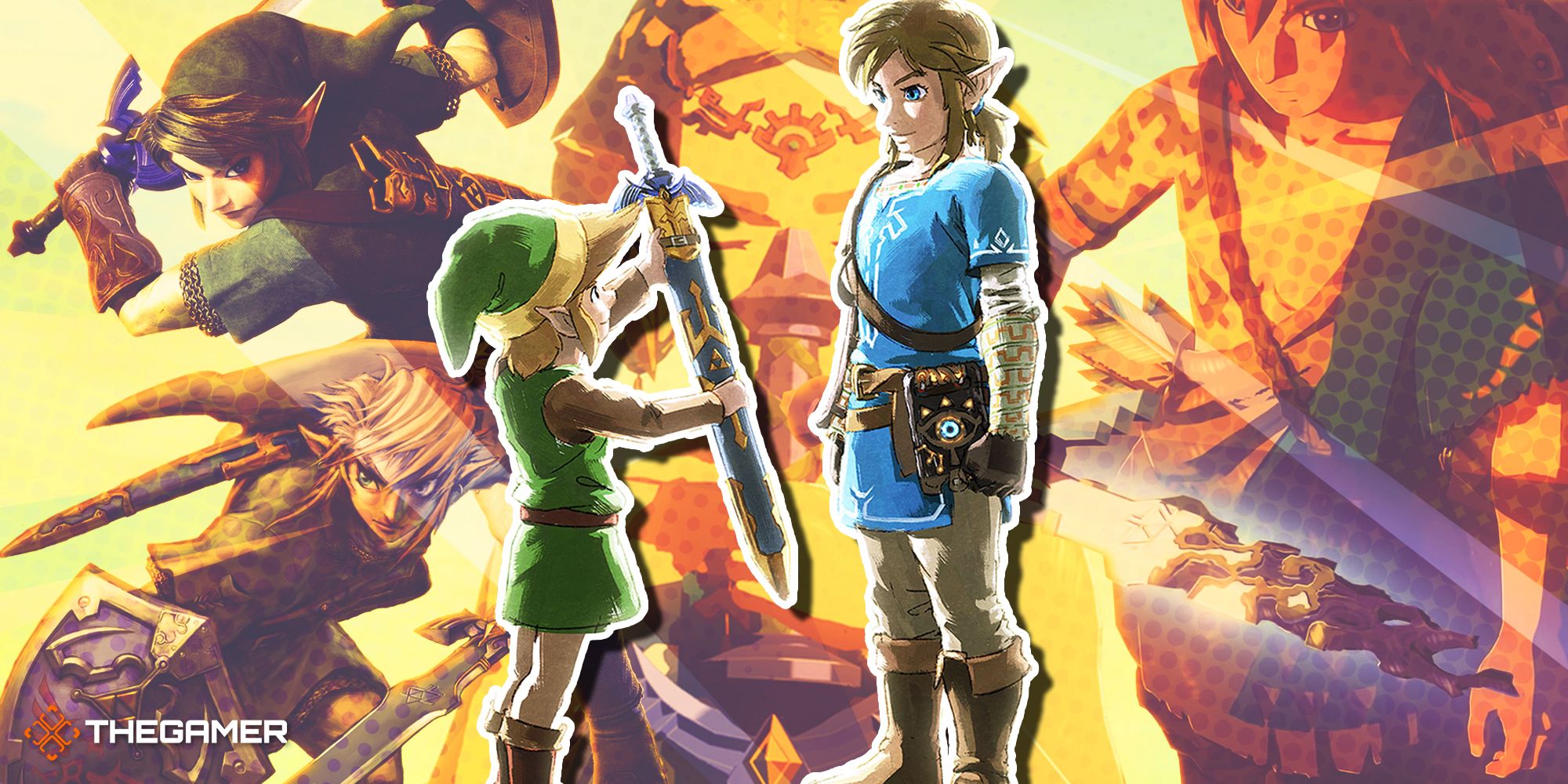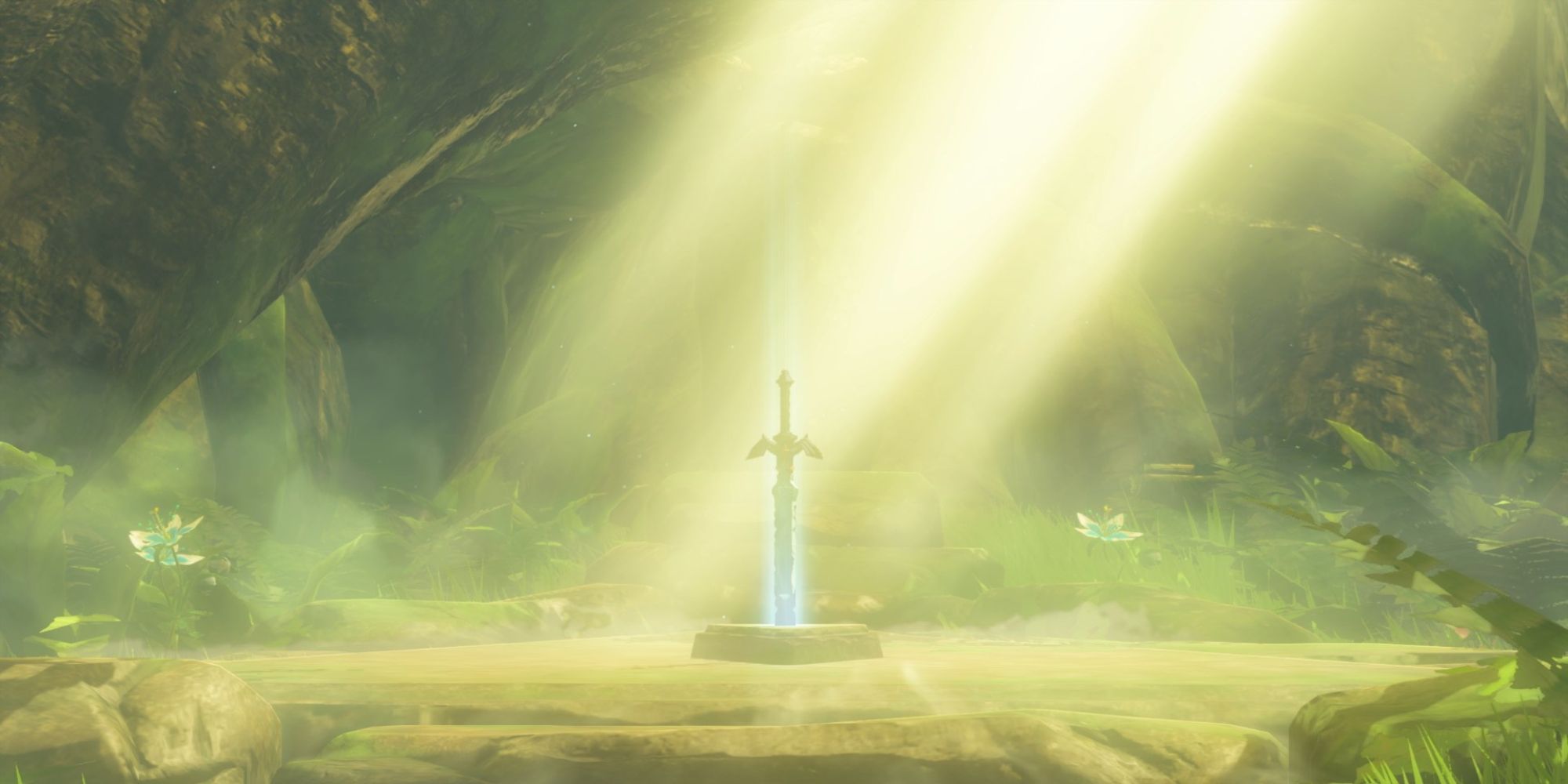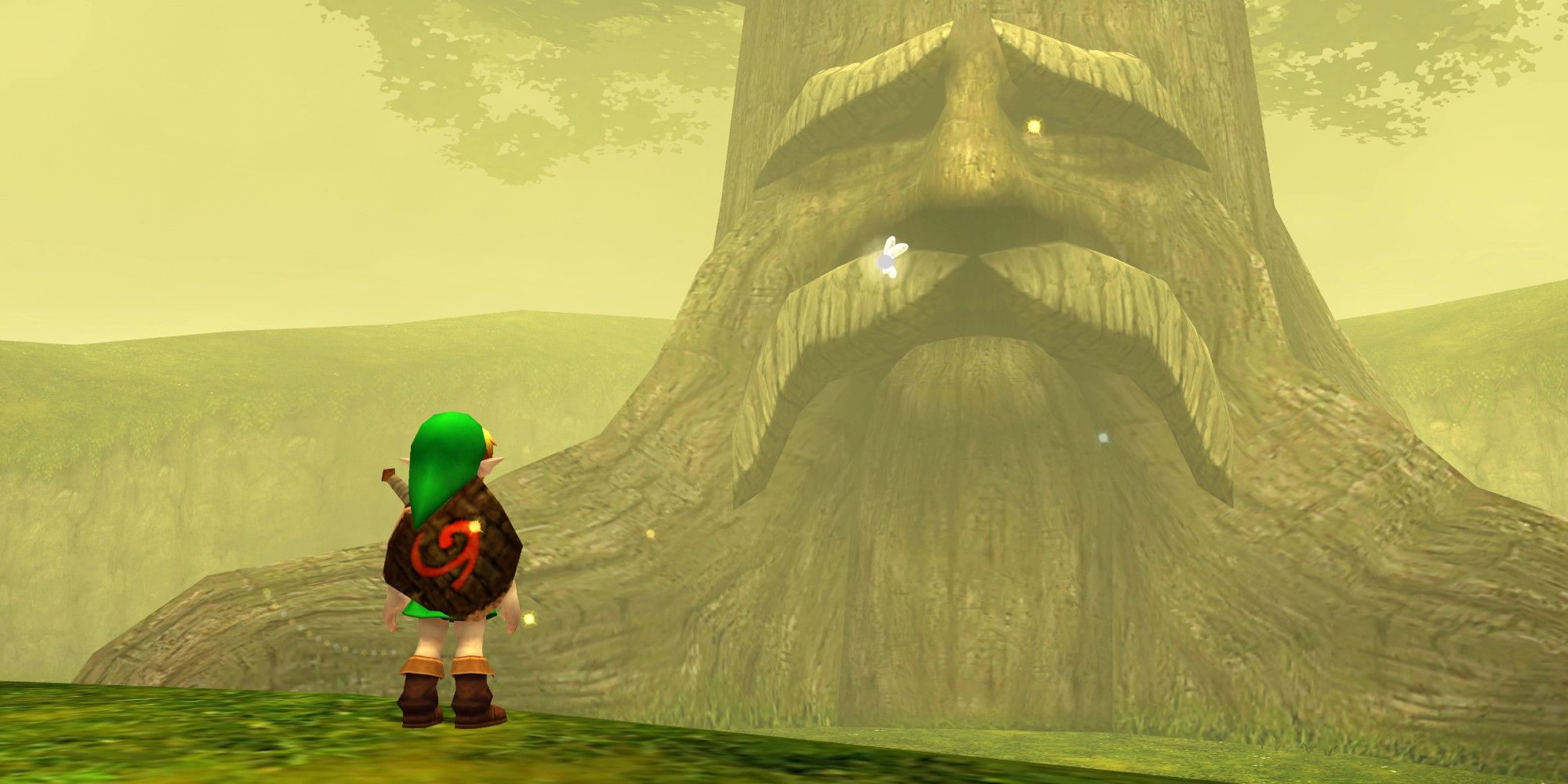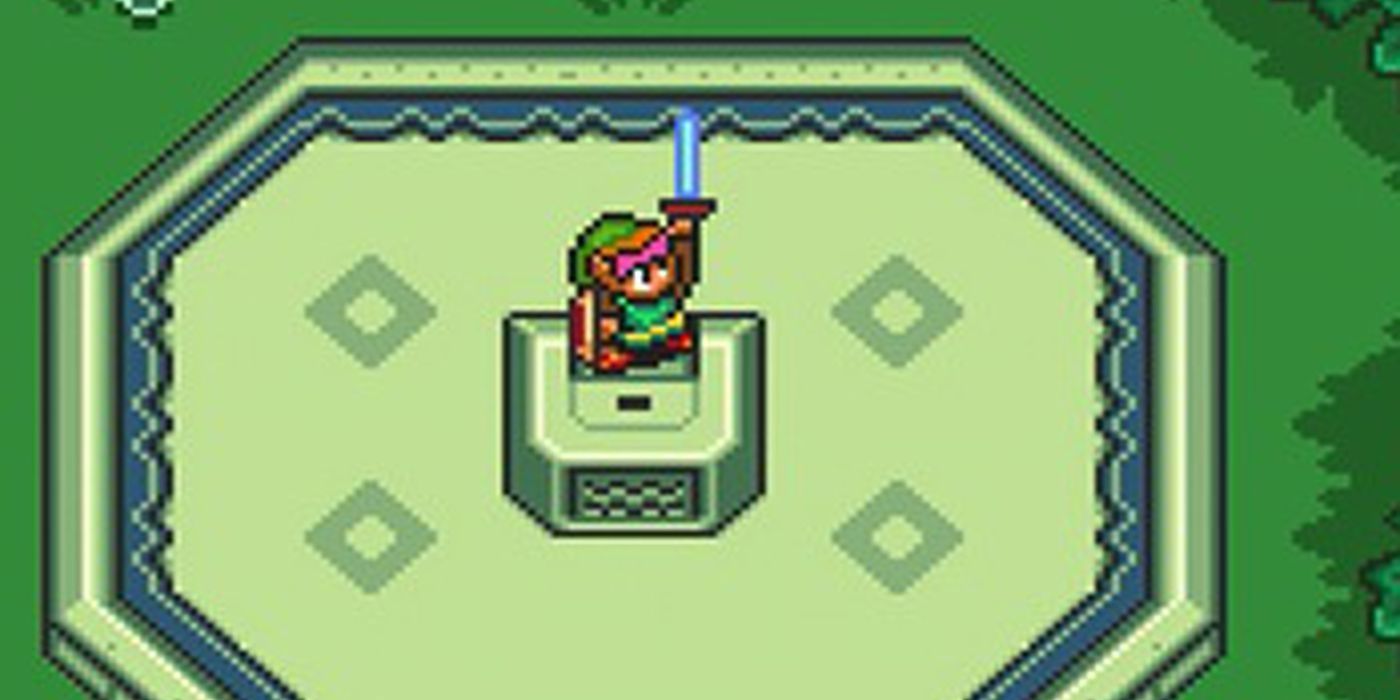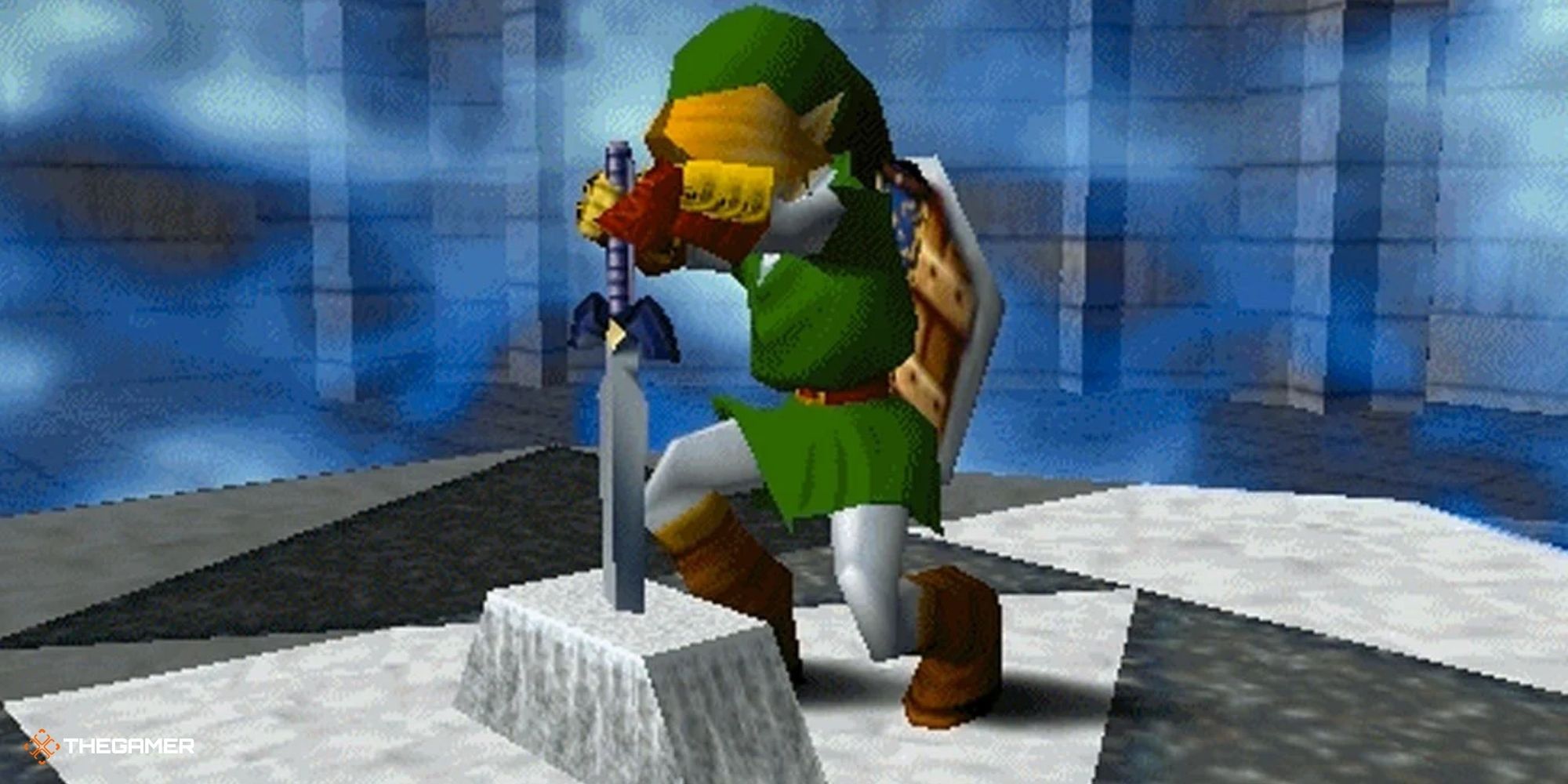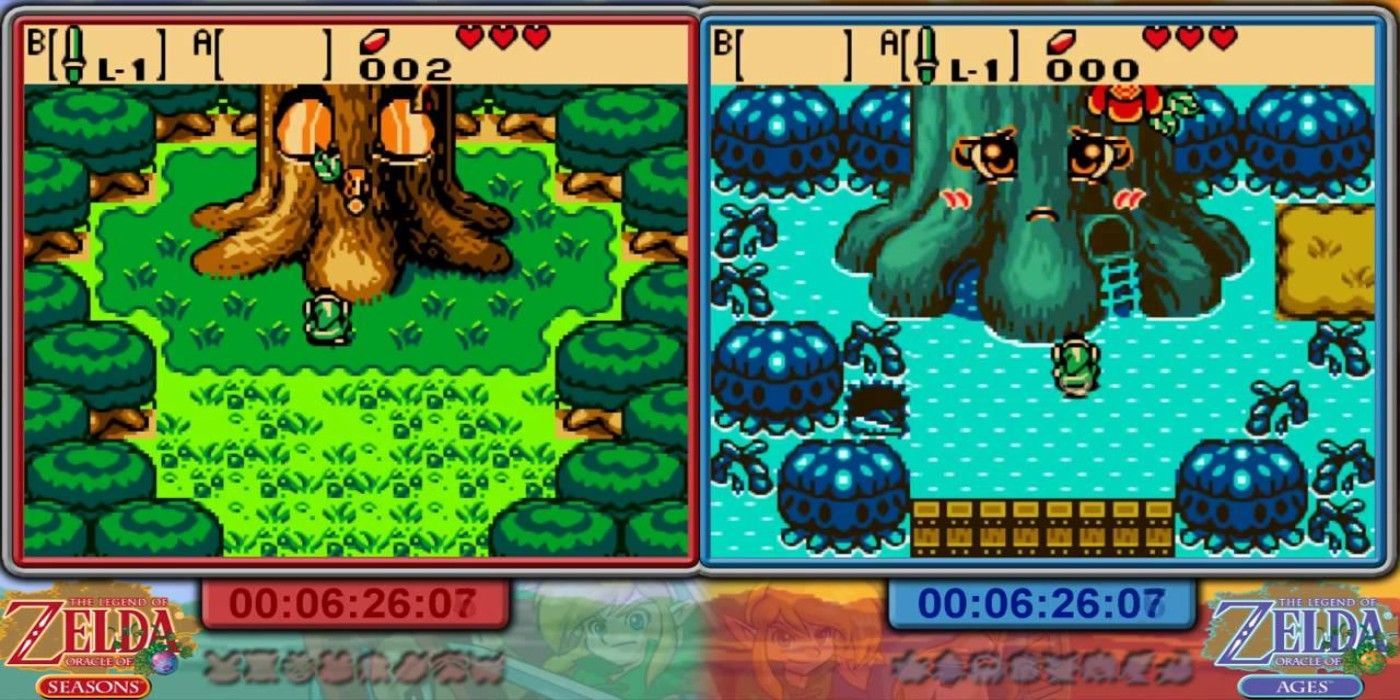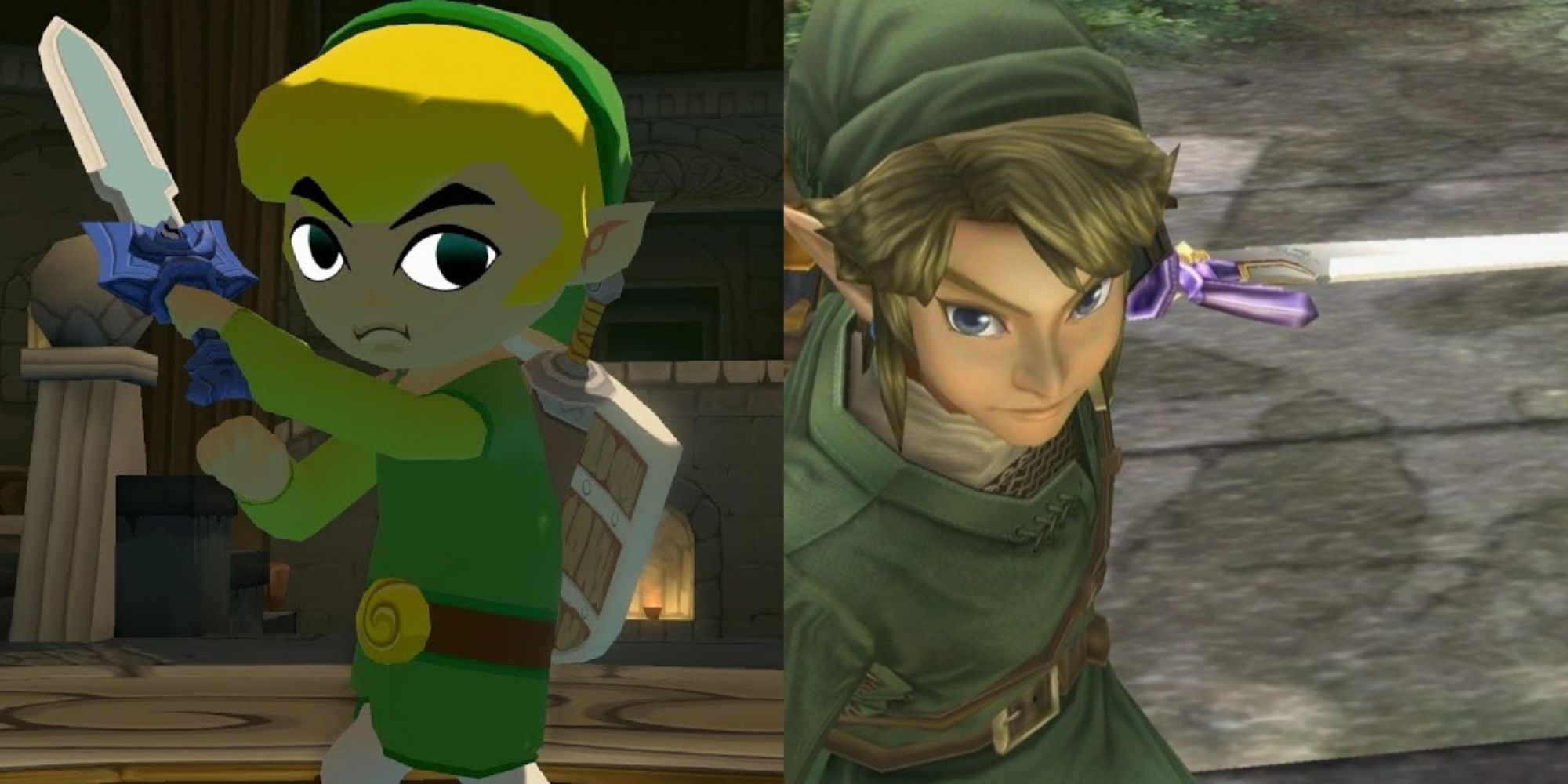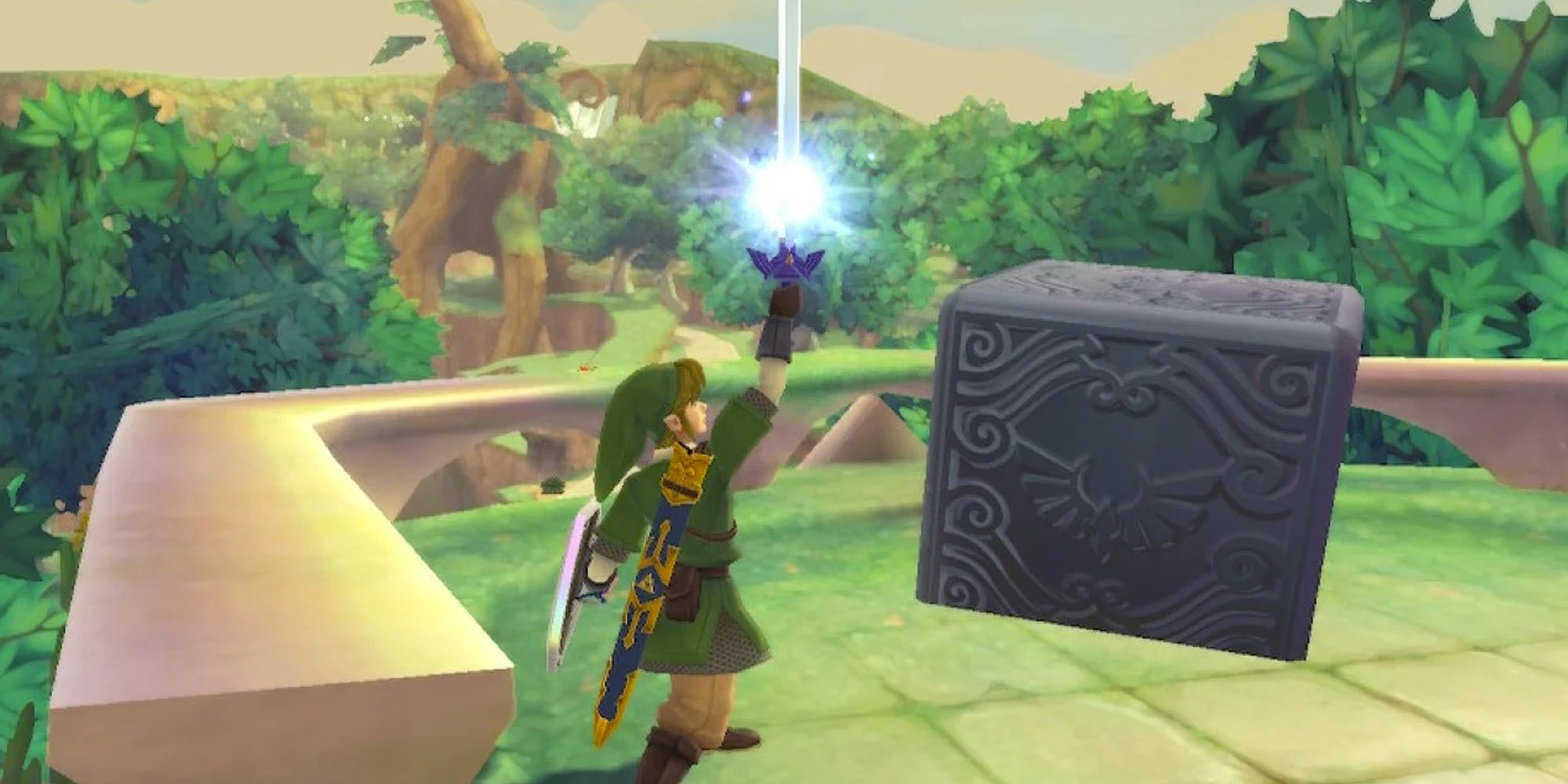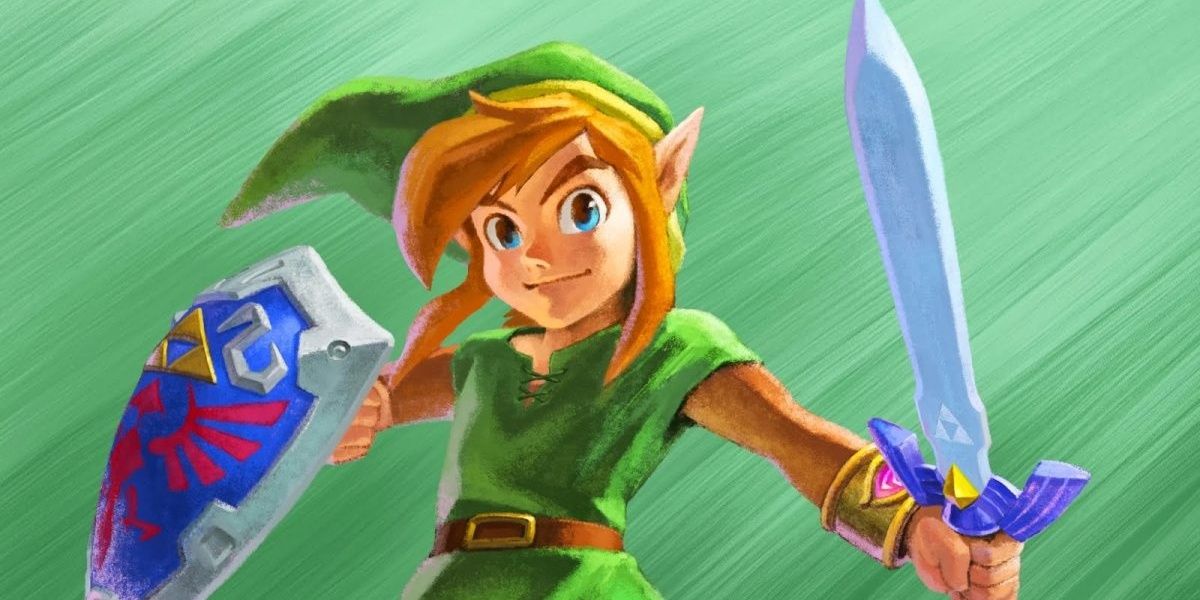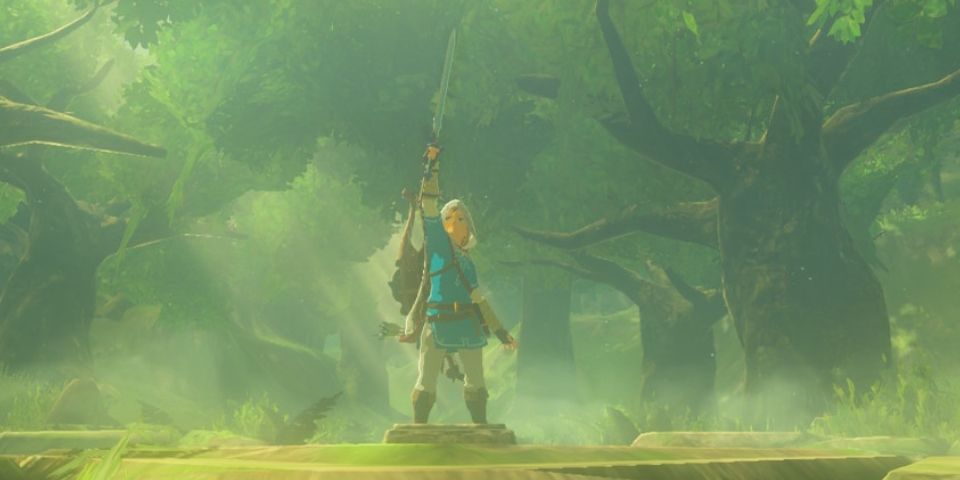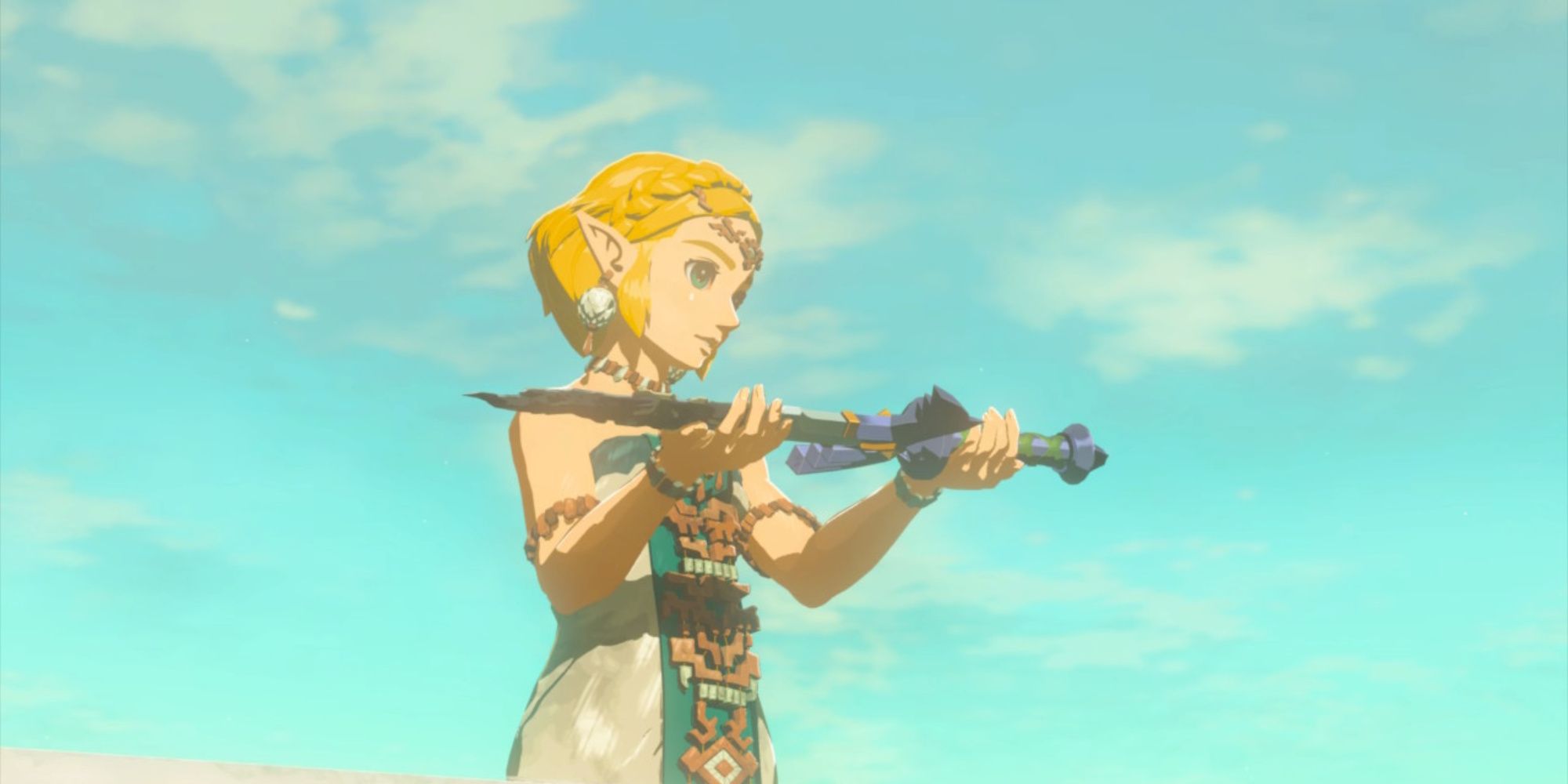Quick Links
In the brief but impactful history of video games, The Legend of Zelda solidified itself as one of the earliest and greatest gaming franchises there is. Plenty of prestige comes with a name like that, and lots of history too. One such piece so core to the franchise is the Master Sword.
Often renowned as one of the most iconic weapons in gaming, the Master Sword appears in the vast majority of Zelda games, with only a few omissions. The Zelda series itself is relatively loose chronologically, yet the Master Sword is the most detailed piece of history in that world.
Updated July 12th, 2023 by Hilton Webster: With the release of Tears of the Kingdom, the history of the Master Sword has only gotten deeper. The fabled sword is an integral piece of the story, and also highlights some of its less-common features than are seen in other entries.
A Lore-Friendly History Of The Master Sword
Unlike how you might expect it to go from other games, Zelda instead chooses a setting and builds the gameplay around it before ever putting thought into where said game fits in the grand scale of things. As such, this makes it hard to follow lore that Nintendo themselves were very loose with for the longest time. Though the series up until Skyward Sword was given a definitive listing in the Hyrule Historia book, that still didn't mean the games followed chronologically from release.
The Master Sword, being the core object of Skyward Sword, is a great way to track the history of Zelda. Despite being so legendary, it didn't appear until A Link To The Past in 1991, five years after the original game. Skyward Sword, released in 2011, is the actual beginning of the tale of the Master Sword.
Here, the Master Sword was originally the sword wielded by the Goddess Hylia, aptly named the Goddess Sword. It was left sealed away in Skyloft for a hero, which would come to be Link, would claim it and bring it to its true power. This blade was then blessed with the power of Hylia and able to vanquish evil, the only earthly weapon capable of such. Its full power received and Demise, the embodiment of evil, defeated, it is placed within its pedestal in the Temple of Time, a place it would rest for aeons more.
Its next appearance in lore is in Ocarina of Time, where Young Link can retrieve it from its pedestal in the Temple of Time and be transported into the future. Here, it is used as Link's main weapon and, along with the magic of Zelda, has the power to ultimately seal away Ganondorf. Their task complete, the Master Sword is restored to its pedestal, and the timelines fracture in multiple ways.
From here, the next appearance is split between timelines. The first is in A Link To The Past. Here, Link finds it in its famed pedestal in the middle of the forest, presumably the ruins of the Temple of Time, and ultimately uses it to defeat Ganon. Rather cyclically, it appears again in A Link Between Worlds, again acquired in the forest pedestal and is used to vanquish the evil plaguing the world.
In the child timeline, it appears next in Twilight Princess. It is once again left in a pedestal within the Sacred Grove, lifts the wolf curse upon Link, and is used to defeat Ganondorf. Meanwhile, in the adult timeline, the Master Sword is seen in Wind Waker, though this time without its famed power, seemingly having lost it ever since sealing Ganondorf away. As such, Link must spend the game reclaiming its power, before finally defeating Ganondorf in his human form, rather than sealing him away.
Its latest appearance (though Breath of the Wild is currently unspecified in the timeline) parallels Link's own life, its power exhausted with Link close to death, and it to only be retrieved upon his own reclamation of his power. It stands uniquely here for being the only game where Link doesn't need to acquire the legendary sword, and so Ganondorf is ultimately defeated without its power.
The SNES Era
The lore, as it is, is relatively light on the Master Sword. It served its purpose and must rest until it reclaims it. However, examining these games from a gameplay perspective provides a very different look into its history, starting with its very first appearance in A Link To The Past.
Here, it is acquired in the Sacred Grove and is a dramatic improvement in damage over your default sword. Interestingly, the Master Sword can be upgraded, making it stronger and changing its colours. It also has the unique ability to fire off ranged beams when at full health, a feature that would be emulated in various ways in the games to come.
The N64 Era
The next game in the series in which the Master Sword appears is in Ocarina of Time. Here, it serves a much more important story role than previously, allowing Link to exist across two periods of time with the same knowledge. Consequently, this means the Master Sword is only used as an adult and other weapons such as a wooden sword as a child.
Humorously, due to its increased prevalence, the Master Sword actually has fewer unique gameplay elements to it, likely so that there wasn't a mass discrepancy between the actions available to Young Link and Adult Link. Plus, it means other weapons, such as the Biggoron Sword, have their own niches to fill.
The Gameboy Era
The Master Sword appears in three games across the various Game Boy consoles: Oracle Of Ages, Oracle Of Seasons, and Four Swords. In a distinct jump from Ocarina of Time, the Master Sword in each of these games is purely gameplay, only acquirable through specific means.
Oracle of Ages and Oracle of Seasons were created as sister games to each other, representing the three great deities of Hyrule (with the third game mysteriously cancelled). Here, Link has access to two swords, the Wooden Sword and the Noble Sword. To acquire the most powerful sword, the Master Sword, you must first complete one of the games and then link it to the other, unlocking the sword in both. It can subsequently be found in its famed pedestal or acquired as an upgrade to your existing sword.
Four Swords works in a similar way. Released as the first multiplayer Zelda game, it originally came alongside the Game Boy Advance remake of A Link To The Past. Within the game, Link is split into four, and each of them utilises a fraction of the aptly named Four Sword. By linking the game to A Link To The Past, this gets upgraded to the Master Sword visually (though not in terms of lore) and becomes the most powerful weapon in the game.
The Gamecube Era
In Wind Waker, Link finds the Master Sword under the instruction of the King Of Red Lions, and accidentally awakens Ganondorf's army in doing so. Here, the Master Sword is weakened from Ganondorf's murder of the Sacred Sages. As a result, Link must restore its power over the course of the game by awakening the new Sacred Sages. It changes visually throughout the game and gains in power as well, though does not have any deeper powers to it in terms of pure gameplay
The Master Sword again appears in Twilight Princess, with a suite of changes associated with it. Thematically, it breaks the curse that turns Link into a wolf, giving him more freedom to change between the two forms. More functionally, the game has a much deeper combat system, giving the Master Sword more mechanical depth than previous entries. It can also be infused with the Sols in the Twilight Realm, making it defeat most enemies in a single hit and clear away Dark Fog.
The Wii Era
In the single Wii Zelda game, Skyward Sword, the Master Sword got the greatest depth it ever has and likely ever will receive, both thematically and mechanically. It is the central object of the story here, depicting its origin in the lore and why exactly it has such immense power to vanquish evil.
We also see the return of the light beam from A Link To The Past here in the form of Skyward Strike. Each upgrade changes the sword visually as well, much like in Wind Waker, and also increases its damage. It also comes with the infamous Fi, the spirit of the blade and over-bearing tutorial giver.
The DS Era
The Master Sword makes a single appearance on the DS in A Link Between Worlds, a sequel to A Link To The Past (it is rather directly named A Link To The Past 2 in Japan). It actually emulates the Master Sword in its predecessor rather directly here. At full health, it fires off beams of light and can be upgraded to both visually change and increase its damage.
The Switch Era
The Master Sword is both incredibly unique in how it functions within the world of Breath of the Wild, and yet it can also be completely ignored. In it, the Master Sword is returned to its pedestal in the Lost Woods to await Link's return, yet Link can only claim it after acquiring at least 13 hearts.
Unlike every other weapon in the game, the Master Sword does not break, and instead simply loses its power and returns to full durability after ten minutes. It also can't be thrown or dropped in any way, instead firing off the famed beam of light when at full health. This example even has a unique trait: the more hearts you have in total, the further the beam travels.
Finally, the Master Sword's thematic ability to vanquish evil is shown dynamically here. When in the presence of evil, be that when fighting Guardians or near Malice, the Master Sword glows and gets doubled damage and massively increased durability. It can even be returned to its pedestal to perform the Trials of the Sword to increase its damage permanently.
The Master Sword is destroyed at the beginning of Tears of the Kingdom, though it can later be reacquired, this time with the need for exceptional stamina. It operates much like in Breath of the Wild, dealing increased damage toward Gloom-empowered enemies. However, it can now also fuse with other items, appearing ethereally to boost the Master Sword's capabilities, Zonai runes etched along the blade's edge.
The Master Sword's Ability To Regenerate
A feature seen across many of the games is the Master Sword's will. It has a mind of its own, guided by Fi within the blade. Introduced in Skyward Sword, she is the soul of the Master Sword and will always strive to get it into the hands of the Chosen Hero. In many such scenarios, it can take generations for this hero to appear.
As such, the Master Sword must rest, its power dwindling with time. In Ocarina of Time, it rests in the Temple of Time, aging Link ahead to make him powerful enough to wield the blade. In Wind Waker, however, we see that the Master Sword itself must be maintained. With the correct protections in place, such as those of the Sages, the Master Sword can heal from any wound or wear and restore its gleaming lustre.
Much the same occurs in Breath of the Wild. Placed within the Lost Woods in the shade of the Great Deku Tree, the Master Sword regains its power to vanish evil. Yet it also tests Link, making him prove his worth and strength to wield the legendary blade. They work in tandem, rather than one simply empowering the other.
In Tears of the Kingdom, the Master Sword is, seemingly, irreparably damaged by Ganondorf's Gloom, rotted to the hilt. With the Deku tree also in ruins and Ganondorf set to be revived, there is no time to heal the blade except to bring it to the past. In this way, the Master Sword is suffused with the Light Dragon, allowing it to keep the Master Sword away from Ganondorf's reach and fill it with light over generations, enough to snuff out any darkness.

